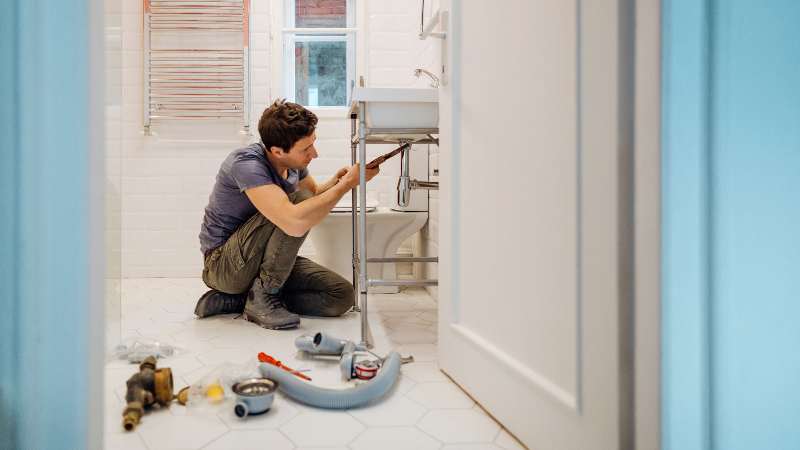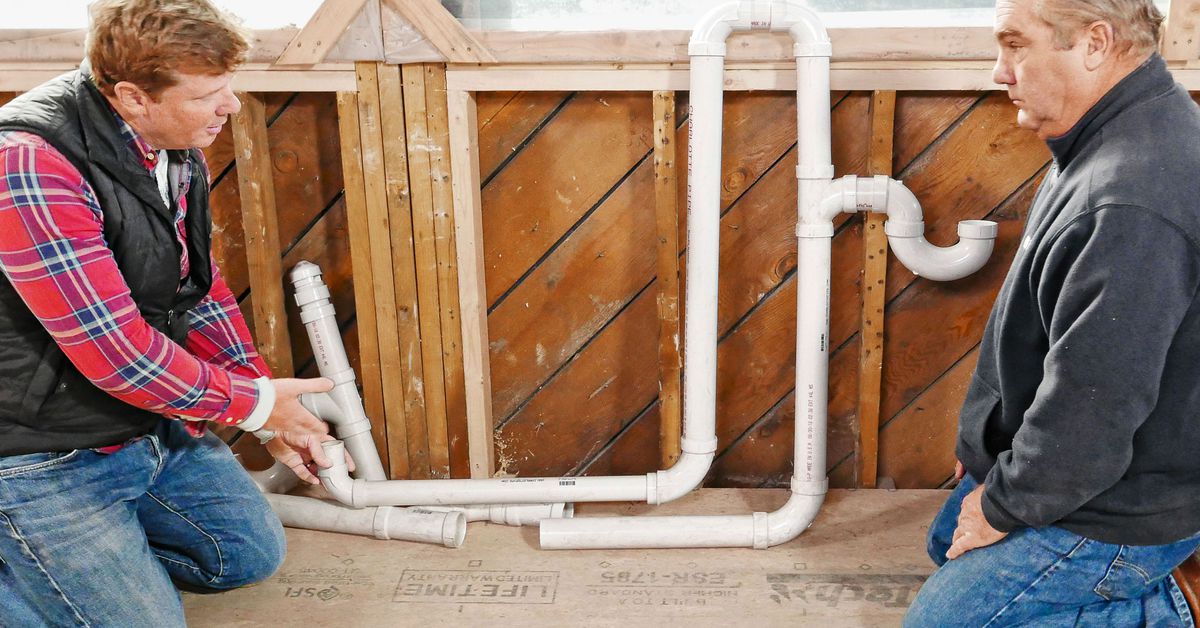Understanding Plumbing Sounds: A Complete Guide To Fixing Them in Your Residence
Understanding Plumbing Sounds: A Complete Guide To Fixing Them in Your Residence
Blog Article
The content which follows in relation to Why Your Water Pipes Are Noisy and How To Shut Them Up is totally engaging. You should investigate for yourself.

To detect noisy plumbing, it is important to identify initial whether the unwanted sounds take place on the system's inlet side-in other words, when water is turned on-or on the drainpipe side. Noises on the inlet side have actually differed reasons: extreme water pressure, used valve as well as tap parts, incorrectly attached pumps or other devices, improperly positioned pipeline fasteners, as well as plumbing runs having a lot of limited bends or other restrictions. Noises on the drainpipe side usually stem from bad area or, as with some inlet side sound, a design having tight bends.
Hissing
Hissing noise that happens when a tap is opened slightly normally signals too much water pressure. Consult your regional water company if you believe this trouble; it will be able to tell you the water pressure in your location and also can install a pressurereducing valve on the inbound supply of water pipeline if necessary.
Thudding
Thudding sound, often accompanied by shivering pipelines, when a tap or appliance valve is turned off is a condition called water hammer. The noise and also vibration are triggered by the resounding wave of stress in the water, which suddenly has no place to go. Often opening up a shutoff that releases water swiftly into an area of piping containing a constraint, elbow, or tee installation can generate the very same problem.
Water hammer can normally be treated by setting up fittings called air chambers or shock absorbers in the plumbing to which the issue shutoffs or taps are linked. These gadgets allow the shock wave created by the halted circulation of water to dissipate airborne they consist of, which (unlike water) is compressible.
Older plumbing systems might have short vertical sections of capped pipe behind walls on tap competes the very same function; these can ultimately full of water, reducing or damaging their performance. The treatment is to drain pipes the water system completely by shutting down the major water system valve and opening up all taps. Then open the major supply shutoff and shut the taps one by one, starting with the tap nearest the shutoff as well as ending with the one farthest away.
Babbling or Shrilling
Extreme chattering or shrilling that happens when a valve or tap is activated, and that usually goes away when the installation is opened completely, signals loose or malfunctioning interior parts. The remedy is to change the valve or tap with a brand-new one.
Pumps and devices such as cleaning devices and also dishwashing machines can move electric motor sound to pipes if they are poorly attached. Link such things to plumbing with plastic or rubber hoses-never stiff pipe-to isolate them.
Other Inlet Side Noises
Squeaking, squeaking, damaging, snapping, and also tapping generally are caused by the development or tightening of pipelines, normally copper ones providing hot water. The audios happen as the pipelines slide against loose bolts or strike nearby home framing. You can frequently identify the place of the trouble if the pipelines are exposed; just follow the noise when the pipelines are making noise. More than likely you will uncover a loose pipeline wall mount or an area where pipelines lie so near to flooring joists or other mounting pieces that they clatter against them. Affixing foam pipe insulation around the pipelines at the point of call ought to treat the problem. Make sure bands and hangers are protected and also give sufficient assistance. Where feasible, pipe fasteners must be affixed to substantial structural aspects such as foundation wall surfaces as opposed to to framing; doing so reduces the transmission of resonances from plumbing to surface areas that can amplify and transfer them. If connecting fasteners to framing is inescapable, cover pipes with insulation or other durable product where they get in touch with bolts, and also sandwich completions of brand-new fasteners between rubber washers when installing them.
Remedying plumbing runs that suffer from flow-restricting tight or various bends is a last hope that must be embarked on just after consulting a competent plumbing specialist. However, this situation is fairly common in older houses that may not have been built with interior plumbing or that have actually seen a number of remodels, particularly by novices.
Drainpipe Noise
On the drain side of plumbing, the chief objectives are to remove surface areas that can be struck by dropping or hurrying water as well as to protect pipes to include inevitable sounds.
In new construction, bath tubs, shower stalls, bathrooms, as well as wallmounted sinks and basins need to be set on or versus durable underlayments to decrease the transmission of sound through them. Water-saving toilets and also taps are less noisy than standard models; install them rather than older types even if codes in your area still allow making use of older components.
Drainpipes that do not run vertically to the cellar or that branch right into straight pipe runs sustained at floor joists or other mounting existing especially bothersome sound issues. Such pipelines are large sufficient to radiate considerable resonance; they also bring substantial amounts of water, which makes the circumstance worse. In brand-new building, define cast-iron dirt pipes (the big pipelines that drain bathrooms) if you can manage them. Their enormity includes a lot of the noise made by water travelling through them. Also, stay clear of routing drains in walls shown to bedrooms and also spaces where individuals collect. Wall surfaces consisting of drainpipes ought to be soundproofed as was defined earlier, making use of double panels of sound-insulating fiber board and wallboard. Pipes themselves can be wrapped with unique fiberglass insulation made for the function; such pipelines have an invulnerable plastic skin (in some cases having lead). Outcomes are not always satisfactory.
If Your Plumbing is Making These Sounds, There’s a Problem
A Bang or Thump When You Turn Off a Faucet
If a loud bang or thump greets you each time your turn off running water, you likely have a water hammer. A water hammer occurs when the water velocity is brought to a halt, sending a shock wave through the pipe. It can be pretty jarring — even worse, damaging to your plumbing system. All that thudding could loosen connections.
Strange Toilet Noises
You’re so familiar with the sounds your toilet makes that your ears will be attuned to anything out of the ordinary. Fortunately, most unusual toilet noises can be narrowed down to just one of several problems.
Foghorn sound:
Open the toilet tank Flush the toilet When you hear the foghorn noise, lift the float to the top of the tank If you’re ambitious, you can remove the ballcock valve and disassemble it to replace the washer. Or you can more easily replace the ballcock valve entirely. This device is relatively inexpensive and available at most any hardware store.
Persistent hissing:
The hissing following a flush is the sound of the tank filling. It should stop once the tank is full. But if the hissing continues, it’s likely because water is leaking out of the tank. The rubber flap at the bottom of the tank can degrade, letting water slip through and into the bowl. That’s why the tank is refilling continuously. Fortunately, this is an easy fix:
Cut the water to the toilet by closing the shutoff valve on the water supply line. Flush the toilet to drain the tank. Disconnect the flapper Attach the new flapper Gurgling or bubbling:
Gurgling or bubbling suggests negative air pressure in the drain line, likely resulting from a clog. As air releases, it causes the water in the toilet to bubble. This could either be a minor issue or a major one, depending on the clog’s severity. Clogs can be caused by toilet paper or more stubborn obstructions such as tree roots. If you can’t work out the clog with a plunger, contact a professional plumber for assistance because a clog of this magnitude could lead to filthy and unsanitary sewage backups in your sink bathtub.

I'm just very occupied with Why Your Water Pipes Are Noisy and How To Shut Them Up and I really hope you liked my blog post. Those who appreciated our blog entry if you please don't forget to share it. We recognize the value of reading our article about Why Do My Plumbing Pipes Make A Knocking Noise.
Efficient help? Call! Report this page